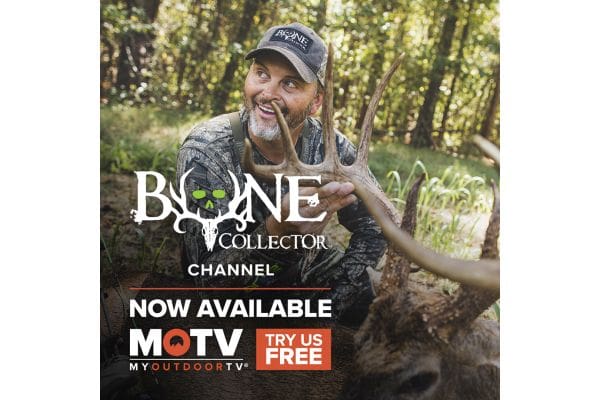When I first hunted my II7-acre farm in northwestern Virginia, I saw only a few young bucks and way too many does. Big deer were rare. The unbalanced age structure and buck-to-doe ratio meant that the rut was subtle and often a letdown. Now, though, mature bucks are common, some sporting big, heavy racks. The rut is intense, and the deer herd is better balanced and healthy.
What changed? Our land and deer management plans. Many hunters think you need a large spread to make any meaningful changes to a deer herd, but this just isn’t so. Small landowners do, however, face some special challenges. The following 10-step program will help you improve the deer herd, the habitat, and, ultimately, your hunting success.
1. Pass up young bucks.

You’ve heard this one before, but maybe you think, like many people in your situation, that you can’t really change the age structure on a small tract. Well, it is more difficult with limited ground, but you can make a difference if you also follow through on the some of the other steps below. I know because I’ve done it. Start, at least, by passing up 1-year-old bucks. Better yet, put 2-year-olds off limits too. At 3 years, a buck will grow a rack of over half of its potential, and for a lot of hunters, in a lot of areas, this is a deer worthy of the wall. Much depends on the hunting pressure surrounding you and the attitudes of neighboring landowners. In an ideal situation, you’d pass up 3-year-olds too. Bucks need five years to grow their best antlers.
2. Harvest does.
A tract of land can hold only so many deer. Would you like that population to be 90 percent does and 10 percent bucks, or closer to a 50-50 ratio? The greater the percentage of bucks in the herd, the more likely some will slip through and make it to older age classes. Fewer does means more competition among bucks for breeding rights and a more intense rut.
3. Establish sanctuaries for your deer.
You need at least one major “safety zone” near the interior of your property. It should have thick cover so bucks feel secure, and it should be off-limits to hunting, scouting, and even hiking. If you break down and hunt a refuge area when things get tough, you’ve defeated its purpose. Deer from surrounding properties may pile in during the season.
4. Limit hunting pressure on your land.
Deer, particularly older bucks, can sense hunting pressure. On a small property, if several people are regularly stand hunting, and one or two more are still-hunting or rattling, you’ll wind up with one of two outcomes: Bucks 2 years old or older will become nocturnal, or they’ll move off to find less pressured ground. Have rest days when no one hunts, and limit the number of people on the land.
5. Work with surrounding landowners.
Depending on your neighbors, it may be tough to convince them to take some of the same steps, but you’ve got to try. Don’t be aggressive or pushy. Instead, ask questions such as whether they’re seeing as many good bucks as they’d like. Tell them what you’re trying to do. Teach by example, offer to help with the work that needs to be done, and maybe, just maybe, they’ll see the wisdom of harvesting does, passing up young bucks, and improving the habitat.
6. Plant food plots for your deer.
A 1-acre plot can provide as much forage as hundreds of acres of mature woods. Such plantings also keep native vegetation from becoming overbrowsed. The more tracts that you can plant and maintain, the better. Good crops to consider include clover, chicory, Austrian winter peas, brassicas, lablab, cow peas, wheat, and mixtures from wildlife seed companies.
7. Create better bedding and security cover.

A good way to give deer the security they need is to plant evergreens, such as pines. Put them in clusters in areas where deer might naturally bed. Open forests can easily be improved with a chain saw. Cut old, poor-value, misshapen, or pest-infested trees. Hinge cut some or fell and leave some of them, or at least the tops, on the ground. Clear-cut a few small, irregularly shaped areas. The brush and low saplings that grow back will make wonderful, almost jungle-like cover in a few years.
8. Put small ponds on your property.
A deer needs an average of 1-1/2 quarts of water a day. They get some from vegetation. But during dry periods, having water on your property may mean the difference between bucks staying or going. Study the topography and you’ll see low spots that drain surrounding hillsides or hollows that would make good pond sites. They don’t have to be large. A 1/4-acre pond will serve the water needs of an entire herd.
9. Get help from the government.
Biologists, foresters, and agricultural specialists are available to help you, often free of charge. Consult the U.S. Department of Agriculture’s Natural Resources Conservation Service, the state forestry department, your local agricultural extension agent, and the state game department, among others.
10. Collect data and keep records.
Track how many deer are harvested, as well as their age, weight, and sex. Measure the racks for antler circumference (above the burr) and beam length. Make notes on the productivity of various food plots, how well deer use them, dates when rutting activity begins and ends, the number of fawns with does, and other important data. This will allow you to track your progress and see the difference you are making, and it can reveal patterns that inform your strategies for even better success down the road.
Read the full article here




